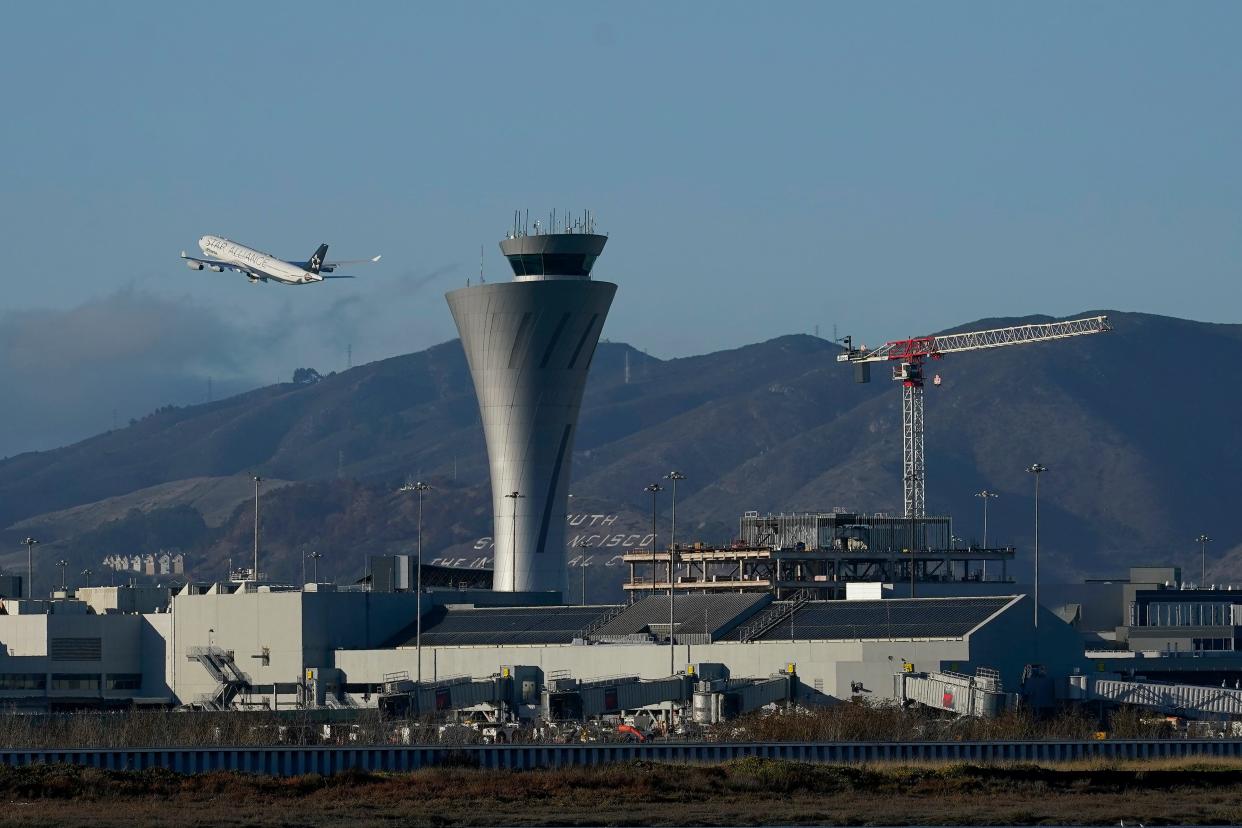Low staffing, more close calls: FAA responds to increased scrutiny on aviation safety
Remember when a FedEx cargo plane was cleared to land on the same runway a Southwest jet was preparing for takeoff in Austin, Texas? Or the time a private plane took off at Boston Logan International Airport while a JetBlue flight was preparing to land on a conflicting runway?
With headline-grabbing close calls and a recent New York Times investigation, aviation safety has been in the spotlight for months.
According to Federal Aviation Administration data, near-miss accidents where planes nearly hit each other have increased nearly 25% in the last decade, with about 300 such accidents in the most recent 12-month period for which reports are available.
"We're trying to take a bigger look and do some deeper analysis to see what's going on," Transportation Secretary Pete Buttigieg told USA TODAY back in March. "It's enough that I'm concerned."
What is a near-miss incident?
Near misses are essentially when airplanes get closer to each other than they should without coming into contact. These can happen on the ground or in the air, and while their numbers have increased in the last decade, the actual number of collisions remains low.

How do near misses occur?
Near misses in aviation are almost always the result of human error. Whether it’s a pilot flying or taxiing somewhere they’re not supposed to, or an air traffic controller clearing a plane to go somewhere that conflicts with another aircraft’s movement, these incidents don’t happen by themselves.
Fortunately, especially for midair conflicts, commercial jets have sophisticated collision avoidance systems that instruct pilots how to maneuver their aircraft if another plane gets too close.
What is being done to improve air traffic safety oversight?
A big contributor to the rise in near misses seems to be understaffing at air traffic control centers, according to the National Air Traffic Controllers Association, the union that represents air traffic control employees.
“Staffing shortages throughout the NAS have placed a tremendous amount of strain on air traffic controllers,” NATCA president Rich Santa said in a statement. “We saw the effect that air traffic controller staffing shortages had on air travel this summer, and although there has been an increased focus on training, the hiring process to overcome the staffing shortage takes years.”
According to the union, air traffic controllers in many facilities are working mandatory overtime with 10-hour shifts six days per week.
According to the FAA, the agency is working to increase and streamline hiring and improve training to get more controllers in towers around the country.
“We recently completed a comprehensive review of the distribution of controllers, which was included in the Controller Workforce Plan submitted to Congress on May 5. Additionally, we are implementing the Air Traffic Operations Management System (ATOMS), a comprehensive system that will track controller timekeeping and various work assignments,” the agency said in a statement.
The FAA also said it would invest $121 million to update infrastructure at some airports around the country to reduce the risk of runway incursions, one of the kinds of close calls that happen on the ground. The projects it's funding include taxiway reconfigurations and new lighting systems.
Tell us your story: Mobility device lost or damaged by an airline? USA TODAY wants to hear about it.
Are near-miss incidents something I should worry about?
Although near-miss incidents are up, aviation remains incredibly safe. As the FAA pointed out, there have been no fatal crashes in U.S. commercial passenger aviation since 2009.
“The U.S. aviation system is the safest in the world, but one close call is one too many. The FAA and the aviation community are pursuing a goal of zero serious close calls, a commitment from the Safety Summit in March. The same approach virtually eliminated the risk of fatalities aboard U.S. commercial airlines,” the FAA said.
However, aviation professionals are sounding the alarm that the strain on the safety system will only continue to get worse if it’s not addressed through hiring and other improvements.
Zach Wichter is a travel reporter for USA TODAY based in New York. You can reach him at zwichter@usatoday.com
This article originally appeared on USA TODAY: FAA working to improve safety, address rising incident numbers
